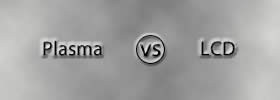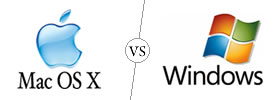Difference between Vitamins and Minerals
Key Difference: Vitamins are various organic compounds essential in small quantities for healthy human growth. On the other hand, minerals are any naturally occurring inorganic materials that have a more or less definite chemical composition and characteristic physical properties.
 Vitamins and minerals play a very significant role for a healthy body. However, they differ in their chemical composition and nutritional requirements.
Vitamins and minerals play a very significant role for a healthy body. However, they differ in their chemical composition and nutritional requirements.
Dictionary.com defines vitamins as “any of a group of organic substances essential in small quantities to normal metabolism, found in minute amounts in natural foodstuffs or sometimes produced synthetically: deficiencies of vitamins produce specific disorders.”
Vitamins are organic compounds and are mainly obtained from plants and animals. Vitamins which are needed a lot for the bodies are:
- Vitamins A
- Vitamin B
- Vitamin C
- Vitamin D
- Vitamin E
- Vitamin K
- Vitmain B6
- Choline
- Niacin (Vitamin B3)
- Thiamin (Vitamins B1)
- Vitamin B12
This is true that vitamins are easily destroyed while cooking due to heat or chemical agents. Therefore, one must take care while preparing food or storing it in fridge or deep freezer. Most vitamins facilitate processes inside one’s body. They relieve in the absorption, digestion and metabolism of other nutrients.
Dictionary.com defines minerals as:
- Any of a class of substances occurring in nature, usually comprising inorganic substances, as quartz or feldspar, of definite chemical composition and usually of definite crystal structure, but sometimes also including rocks formed by these substances as well as certain natural products of organic origin, as asphalt or coal.
- A substance obtained by mining, as ore.
- Any substance that is neither animal nor vegetable.
- Minerals, British , mineral water
- Nutrition. Any of the inorganic elements, as calcium, iron, magnesium, potassium, or sodium, that are essential to the functioning of the human body and are obtained from foods.
 Minerals are inorganic; they do not contain carbon and are also classified as inorganic nutrients. They are similar to vitamins because they don’t provide energy for the body. Minerals are gotten from soil and water and are not vulnerable to heat, chemical reactions and sunlight. They are basically divided into two parts: Macro minerals and trace minerals. Macro minerals are the minerals which are needed in large amounts by the bodies, whereas, trace minerals are needed only in small quantities.
Minerals are inorganic; they do not contain carbon and are also classified as inorganic nutrients. They are similar to vitamins because they don’t provide energy for the body. Minerals are gotten from soil and water and are not vulnerable to heat, chemical reactions and sunlight. They are basically divided into two parts: Macro minerals and trace minerals. Macro minerals are the minerals which are needed in large amounts by the bodies, whereas, trace minerals are needed only in small quantities.
The essential minerals are:
- Calcium
- Phosphorus
- Magnesium
- Sodium
- Potassium
- Iron
- Copper
- Zinc
- Iodine
- Chloride
The key difference between vitamins and minerals are as follows:
|
|
Vitamins |
Minerals |
|
Compounds |
Organic compounds |
Inorganic comounds |
|
Energy comes from |
Plants and animals |
Soil and water |
|
Chemical |
Vitamins are in chemical form |
Much simpler than the vitamins |
|
Needed |
All vitamins are needed |
All minerals are not needed |
|
Examples |
Vitamin A, B, D, E, etc |
Gold, fluoride, etc. |
The question which arises in everybody's mind is, from where one will get their sufficient amount of vitamins and minerals? So, the answer is do not skip food; and eat everything. One should never limit their diet to a few foods. Eat wide variety of fruits, vegetables, nuts, whole grains, meats and lots more. Supplements usually aren’t necessary if one is having a well-rounded diet.
Thus, to maintain a good physique or body, one should have a balanced diet in order to get sufficient vitamins and minerals everyday. One can get vitamins and minerals from natural sources and enriched sources.
Image Courtesy: lifestyle9.com, exeterareagardenclub.com









Add new comment